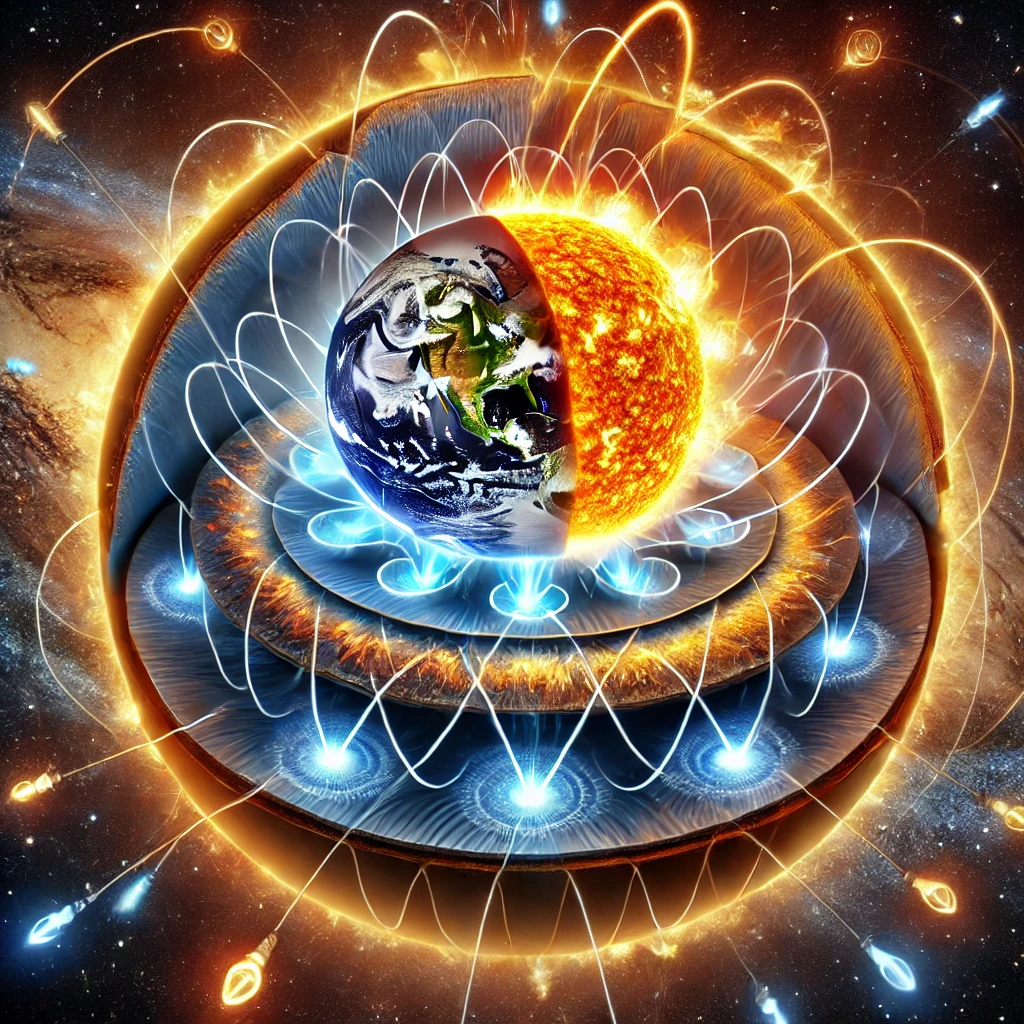
The Expanding Earth Theory and the Electric Universe Theory: A Combined Perspective
Introduction
The Expanding Earth Theory posits that the Earth has been increasing in volume over geological time. This theory, while largely marginalized in contemporary geophysics, has historical significance and continues to intrigue some researchers. The idea suggests that the continents were once more compact and that the expansion of the Earth caused their drift apart. In recent years, some proponents have explored the potential synergy between the Expanding Earth Theory and the Electric Universe Theory, proposing that the two together might offer a more credible argument for Earth’s expansion. This article examines the historical context, evidence, and criticisms of the Expanding Earth Theory, while also exploring how the Electric Universe Theory might provide a supporting framework.
Historical Context
The origins of the Expanding Earth Theory can be traced back to the early 20th century. Otto Hilgenberg was one of the earliest proponents, suggesting in 1933 that the Earth had expanded over time, causing the separation of continents (Hilgenberg, 1933). S. Warren Carey further developed this idea, arguing that an expanding Earth could explain the movement of continents more effectively than plate tectonics (Carey, 1976). The Electric Universe Theory, which posits that electromagnetic forces play a critical role in the dynamics of celestial bodies, offers a potential mechanism that might support the Expanding Earth Theory (Scott, 2015).
Evidence Supporting the Theories
Paleomagnetic Evidence
Proponents of the Expanding Earth Theory often cite paleomagnetic data as evidence. Carey (1976) argued that paleomagnetic poles suggest a pattern consistent with an expanding Earth. According to this view, the fit of the continents around the Pacific Ocean, particularly the matching of geological features across continents now separated by oceans, supports the idea of a once smaller Earth.
Geological and Fossil Evidence
Hilgenberg (1933) and other proponents have pointed to the distribution of fossils and geological formations as evidence. They argue that certain fossilized species found on now distant continents imply these landmasses were once contiguous. Additionally, the geological formations, such as mountain ranges and mineral deposits, show alignments that would make more sense if the continents had been closer together on a smaller Earth.
Electromagnetic Forces and Planetary Expansion
The Electric Universe Theory suggests that electromagnetic forces significantly influence planetary bodies. Scott (2015) posits that changes in the Earth’s electromagnetic environment could impact its volume. This theory suggests that electromagnetic forces might induce expansion by affecting the structure of the Earth’s interior, potentially leading to volumetric increases over geological timescales.
Synergy Between the Theories
Electromagnetic Energy and Earth’s Expansion
One potential synergy between the Expanding Earth Theory and the Electric Universe Theory lies in the influence of electromagnetic energy on matter. If electromagnetic forces can alter the structure of materials within the Earth’s interior, this might explain the mechanism of expansion that the Expanding Earth Theory lacks. According to this combined perspective, shifts in electromagnetic fields could lead to changes in atomic spacing or phase transitions within the Earth’s mantle and core, resulting in expansion.
Integrating Geological and Electromagnetic Data
By combining geological data supporting the Expanding Earth Theory with insights from the Electric Universe Theory, a more comprehensive model of Earth’s dynamics might emerge. For example, changes in the Earth’s magnetic field, which are well-documented over geological time, could correlate with periods of expansion suggested by fossil and paleomagnetic records. This integrated approach could provide a more nuanced understanding of Earth’s geological history and processes.
Criticisms and Challenges
Plate Tectonics
The most significant challenge to the Expanding Earth Theory remains the widely accepted plate tectonics theory. Plate tectonics, developed in the mid-20th century, provides a comprehensive explanation for the movement of continents, earthquakes, and volcanic activity. This model is supported by extensive evidence, including seafloor spreading, the distribution of earthquakes, and GPS measurements of plate movements (McKenzie & Parker, 1967).
Lack of Direct Evidence for Electromagnetic Influence
While the Electric Universe Theory provides an intriguing framework, it lacks direct evidence connecting electromagnetic forces to planetary expansion. Critics argue that the influence of electromagnetic forces on large-scale geological processes is not well-understood or sufficiently documented to support the claims of significant planetary expansion (Turcotte & Schubert, 2002).
Mass and Density Issues
The conservation of mass presents another problem for the Expanding Earth Theory. If the Earth were expanding, it would either need to gain mass or its density would need to decrease. There is no evidence of significant mass increase, and a decrease in density would require major, unexplained changes in the Earth’s internal structure (Rubincam, 1981).
Conclusion
While the Expanding Earth Theory and the Electric Universe Theory each provide interesting perspectives, they both face significant challenges and lack comprehensive evidence. However, exploring the potential synergy between these theories can stimulate new lines of inquiry and offer a more integrated approach to understanding Earth’s geological history. Despite the dominance of plate tectonics in explaining continental movement, the continued investigation into alternative theories underscores the dynamic and evolving nature of scientific understanding.
References
Carey, S. W. (1976). The Expanding Earth. Elsevier.
Hilgenberg, O. C. (1933). Vom wachsenden Erdball. Berlin: Giessmann & Bartsch.
McKenzie, D., & Parker, R. L. (1967). The North Pacific: An Example of Tectonics on a Sphere. Nature, 216(5122), 1276-1280. https://doi.org/10.1038/2161276a0
Rubincam, D. P. (1981). Postglacial Rebound and the Earth’s Moments of Inertia. Geophysical Research Letters, 8(7), 625-628. https://doi.org/10.1029/GL008i007p00625
Scott, D. E. (2015). The Electric Sky: A Challenge to the Myths of Modern Astronomy. Mikamar Publishing.
Turcotte, D. L., & Schubert, G. (2002). Geodynamics. Cambridge University Press.



